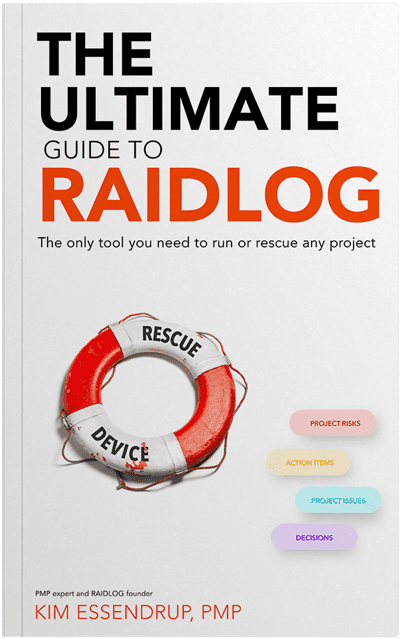Now that you have your project plan updated to respond to risks, it’s time to carry through and ensure those responses actually work as expected – or pivot and react if they don’t. Run through at least the high priority risks on a regular (weekly) basis to ensure the response plans are on track.
It’s during execution of your plan that trigger dates can be particularly useful. As a reminder, a trigger date is the date at which a risk either turns into a real issue, or the risk passes and becomes irrelevant. When you go through your regular risk reviews, pay attention to risks with trigger dates in the coming week(s).
And of course, you should not be doing this in isolation. As you execute your project and keep risks at front of mind, also ensure risk management is part of your project communications, from your team meetings to status reports and executive briefings. This is good for your project, it contributes to a culture of open discussion about risks, and also lets your stakeholders know that you are actively working to keep the project on track.
Consider Obstacles Instead of Risks
There is an interesting approach to risk management worth sharing from Dr. Josh Ramirez and his Institute for Neuro & Behavioral Project Management. In many cases, it can be more useful to refer to risks as obstacles, rather than Risks. Cognitively, a Risk may or may not happen, so we fool ourselves into thinking we might get lucky and get away with ignoring it. This may be part of the reason it is hard to get ourselves and our teams actively engaged in risk management. On the other hand, conceptually, an obstacle is already in the way of success, so it must be dealt with and has more immediacy. As such, we may get more traction with our team and stakeholders if we refer to risks as obstacles – even if they are the same thing.
Using “obstacle” instead of “risk” can also have very practical repercussions. In some commercial situations, obstacles are handled differently contractually than risks, and may be eligible for more financial coverage.
Lessons from the Field: Ironman® race directors stay “1 hour ahead”
Far too often, Risk planning is done once, then ignored until it’s too late. As long as your project is ongoing, you need to stay in front of the things that could go wrong.
I once had the opportunity to interview the race director for an Ironman® triathlon. On race day he is responsible for an event where as many as 3000 athletes push themselves to their physical limits over 140 miles of race course. As athletes progress through those 140 miles, he has to coordinate logistics for tons of food and water and thousands of volunteers to keep athletes safe and healthy. His method for keeping everything going smoothly was to “always think 1 hour ahead of the lead athlete.” Focus on what needs to be ready next on the course, who needs to be there and what support needs to be in place to progress to the next milestone without issue.
This is a great way of thinking about risk, and one that all Project Managers should employ. The same way Ironman® race directors think an hour ahead of the lead athletes, PMs should be thinking a day, a week, maybe even a month ahead of where their project is today, actively managing future activities and potential risks before you get to them.
